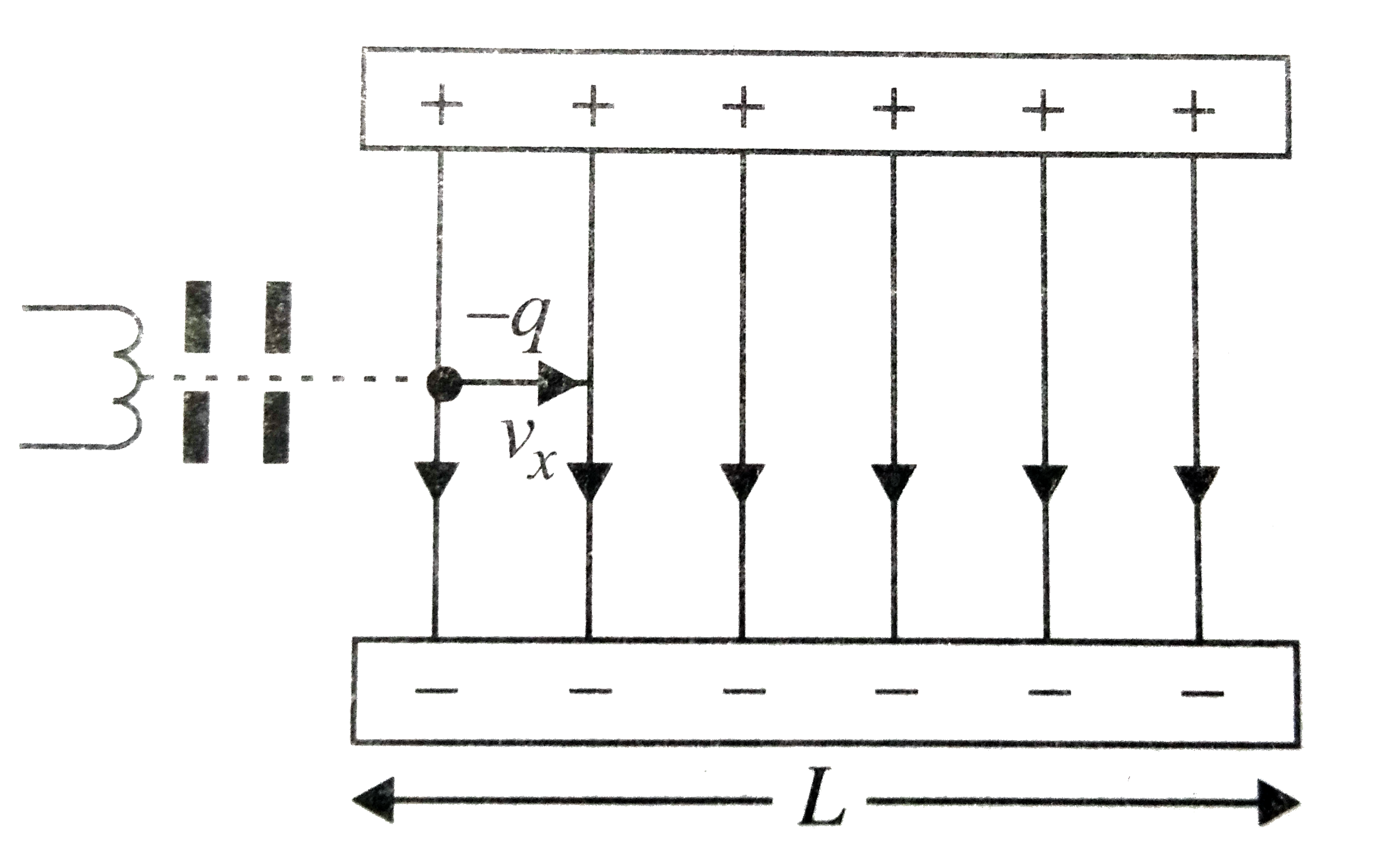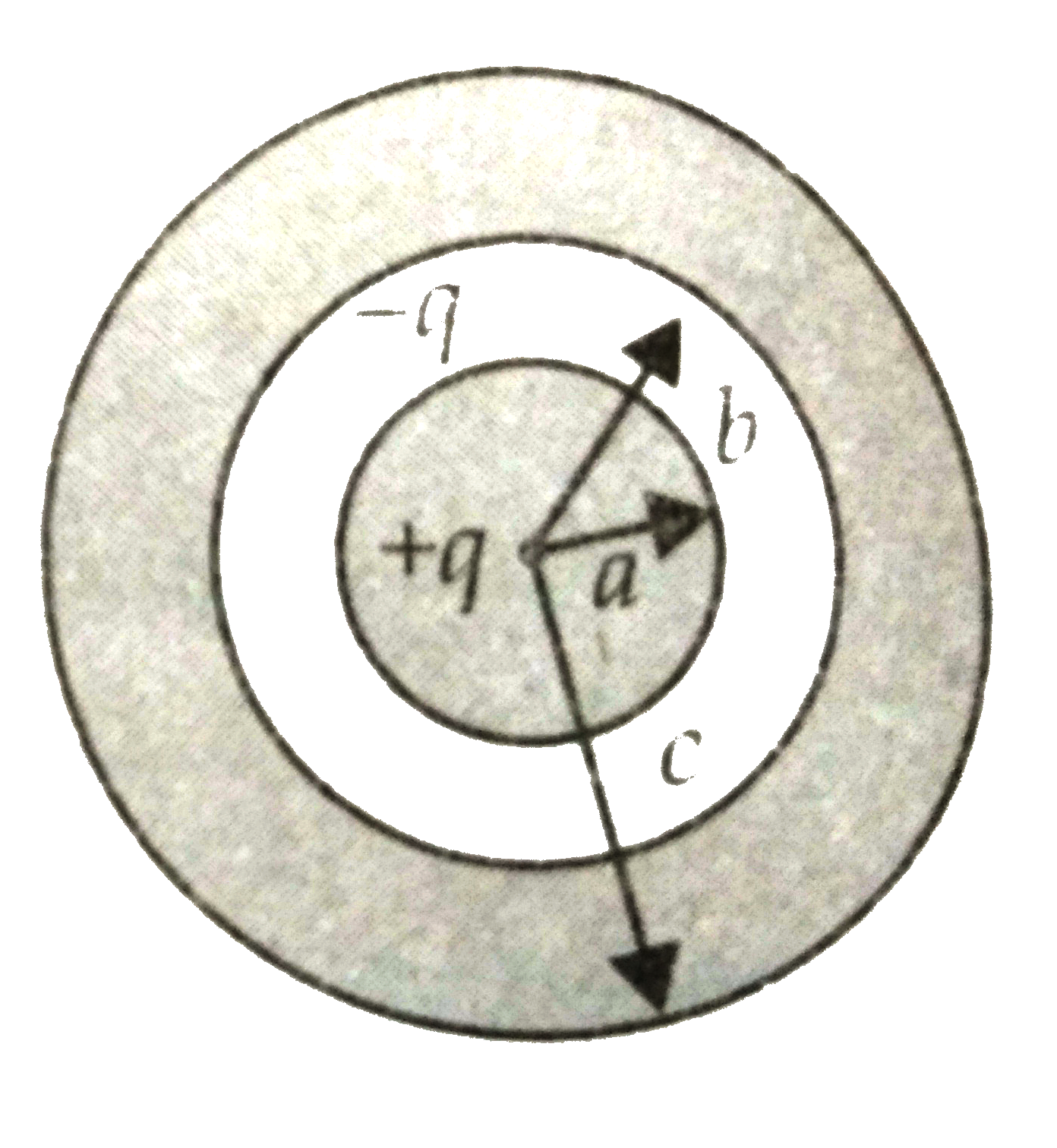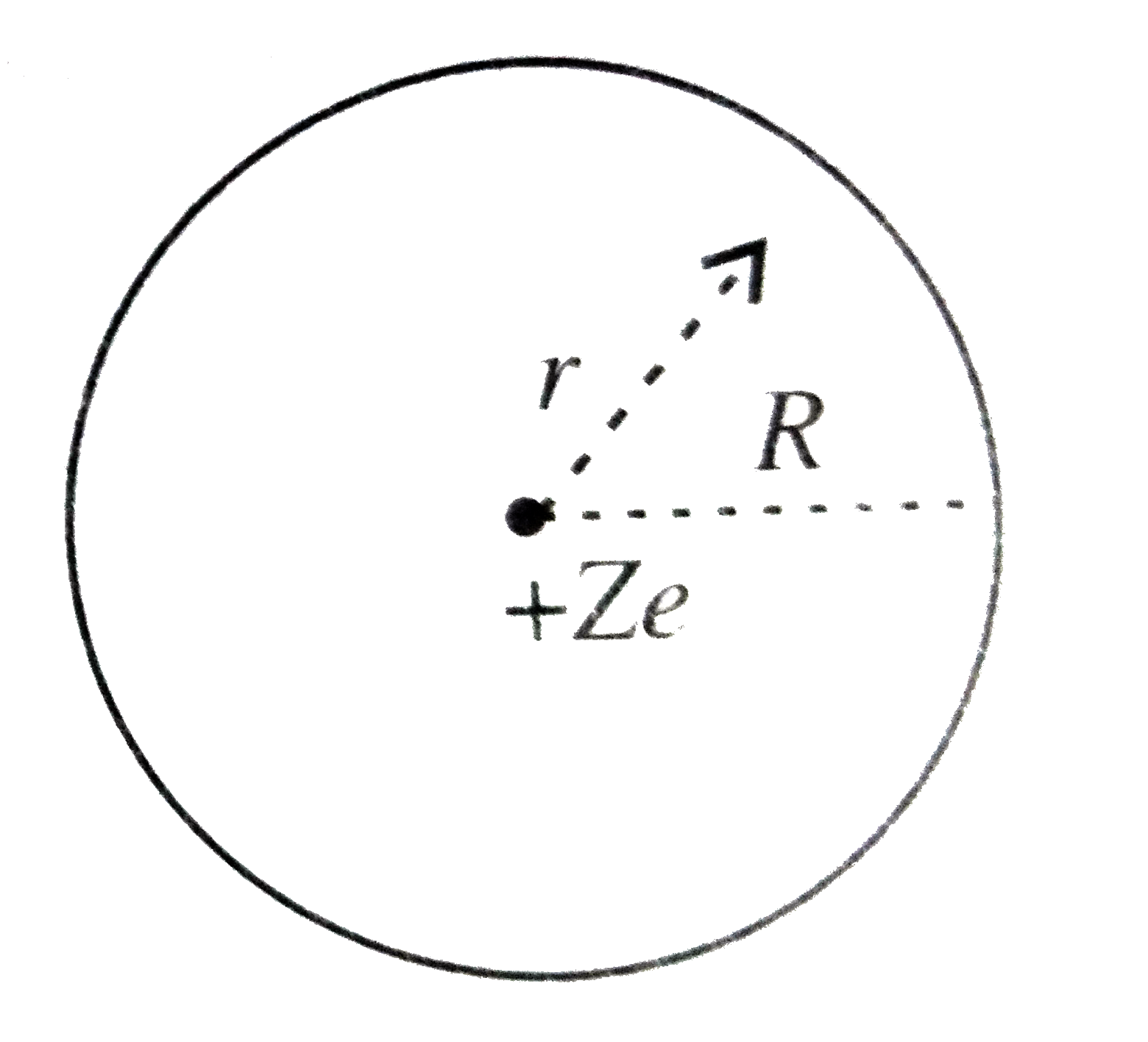Complete Solutions to MCQs of chapter ELECTRIC CHARGES AND FIELDS of Class 12 book with complete answers and questions
| Class 12 | PHYSICS |
| Chapter | ELECTRIC CHARGES AND FIELDS |
| NCERT FINGERTIPS | MCQs |
| Number Of Questions | 82 |
| Academic Year | 2023-24 |
There are two types of electric charges positive charges and negative charges. The property which differentiates the two types of charges is
View SolutionWhat will happen when we rub a glass rod with silk cloth?
View SolutionWhen s person combs his hair, static electricity is sometimes generated by what process?
View SolutionObject may acquire an excess or deficiency of charge by
View SolutionThe charge on an electron was calculated by
View SolutionA method for charging a conductor without bringing a charged body in contact with it is called
View SolutionAn object is charged when it has a charge imbalance, which means the
View SolutionA conducting sphere is negatively charged. Which of the following statements is true?
View SolutionThe number of electrons present in -1 C of charge is
View SolutionA cup contains 250 g of water. Find the total positive charge present in the cup of water.
View SolutionA polythene piece rubbed with wool is found to have a negative charge of `6xx10^(-7)C`. The number of electrons transferred to polythene from wool is
View SolutionIf `10^(9)` electrons move out of a body to another body every second, then the time required to get a total charge of 1 C on the other body is
View SolutionThe number of electrons that must be removed from an electrically neutral silver dollar to give it a charge of +2.4C is
View SolutionA coin is made up of Al and weighs 0.75 g. It has a square shape and its diagonal measures 17 mm. It is electrically neutral and contains equal amounts of positive and negative charges. The magnitude of these charges is (Atomic mass of Al = 26.98 g)
View SolutionIf an object of mass 1 kg contains `4xx10^(20)` atoms. If one electron is removed from every atom of the solid, the charge gained by the solid in 1 g is
View SolutionState Coulomb's law of electric force between two charged bodies.
View SolutionWhich of the following statements is true about electrical forces?
View SolutionIn coulomb's law, on what factors does the value of electrostatic force constant K depend ?
View SolutionWhich of the following statement is not a similarity between electrostaic and gravitational forces?
View SolutionThe unit of permittivity of free space `epsilon_(0)` is:
View SolutionThe force between two small charged spheres having charges of `1xx10^(-7)C and 2xx10^(-7)C` placed 20 cm apart in air is
View SolutionThe nucleus of helium atom contains two protons that are separated by distance `3.0xx10^(-15)m`. The magnitude of the electrostatic force that each proton exerts on the other is
View SolutionTwo insulated charged metallic spheres P and Q have their centres separated by a distance of 60 cm. The radii of P and Q are negligible compared to the distance of separation. The mutual force of electrostatic repulsion if the charge on each is `3.2xx10^(-7)C` is
View SolutionTwo point charges of `+3muC and +4muC` repel each other with a force of 10 N. If each is given an additional charge of `-6muC`, the new force is
View SolutionThe ratio of magnitude of electrostatic force and gravitational force for an electron and a proton is
View SolutionThe electrostatic attracting froce on a small sphere of charge `0.2muC` due to another small sphere of charge `-0.4muC` in air is 0.4N. The distance between the two spheres is
View SolutionUnder the action of a given coulombic force the acceleration of an electron is `2.5 xx 10^(22) ms^(-1)`. Then, the magnitude of the acceleration of a proton under the action of same force is nearly
View SolutionThe acceleration for electron and proton due to electrical force of their mutual attraction when they are 1 Å apart is
View SolutionConsider the charges q,q and -q placed at the vertices of an equilateral triangle of each side l. What is the force on each charge ?
View SolutionConsider three charges `q_(1),q_(2)` and `q_(3)` each equal to `q`, at the vertices of an equilateral triangle of side l. What is the force on a charge Q placed at the centroid of the triangle?
View SolutionThe force per unit charge is known as
View SolutionElectrical as well as gravitational affects can be thought to be caused by fields. Which of the following is true of an electrical or gravitational field?
View SolutionThe Electric field at a point is
View SolutionThe dimensional formula of electric intensity is
View SolutionIf the charge on an object is doubled then electric field becomes
View SolutionA force of 2.25 N acts on a charge of `15xx10^(-4)C`. The intensity of electric field at that point is
View SolutionA conducting sphere of radius 10 cm has unknown charge. If the electric field at a distance 20 cm from the centre of the sphere is `1.2xx10^(3)NC^(-1)` and points radially inwards. The net charge on the sphere is
View SolutionA particle of mass `10^(-3)`kg and charge `5muC` is thrown at a speed of `20ms^(-1)` against a uniform electric field of strength `2xx10^(5)NC^(-1)`. The distance travelled by particle before coming to rest is
View SolutionAn electron initially at rest falls a distance of 1.5 cm in a uniform electric field of magnitude `2 xx10^(4) N//C`. The time taken by the electron to fall this distance is
View SolutionThe electric field that can balance a charged particle of mass `3.2xx10^(-27)`kg is (Given that the charge on the particle is `1.6xx10^(-19)C`)
View SolutionAn oil drop of 10 excess electron is held stationary under a consatnt electric field of `3.6xx10^(4)NC^(-1)` in Millikan's oil drop experiment. The density of oil is `1.26gcm^(-3)`. Radius of the oil drop is
(Take, `g=9.8ms^(-2), e=1.6xx10^(-19)C`)
View SolutionIn question number 45, what will be the electric field at centre O, if the charge from one of the corners (say A) is removed?
View SolutionIn question number 45, what will be the electric field at O if the charge q at A is replaced by -q?
View SolutionA particle of mass m and charge -q enters the region between the two charged plates initially moving along x-axis with speed `v_(x)` as shown in figure. The length of plate is L and a uniform electric field E is maintained between the plates. The vertical deflection of the particle at the far edge of the plate is

View SolutionTake the particle in question number 49, an electron projected with velocity `v_(x)=4xx10^(6)ms^(-1)`. If electric field between the plates separated by `1 cm` is `8.2xx10^(2)NC^(-1)`, then the electron will strike the upper plate if the length of plate is (Take `m_(e)=9.1xx10^(-31)kg`)
View SolutionElectric field lines provide information about
View SolutionWhich of the following figures represents the electric field lines due to a single positive charge ?
View SolutionWhich of the following figure represents the field lines due to a single negative charge ?
View SolutionIn question 55, which charge has the largest magnitude?
View SolutionIn question 55, which region or regions of the figure could the electric field be zero?
View SolutionWhich of the following represent the electric field lines dut to a combinations of two negative charges?
View SolutionWhich of the following figure represents the electronic field lines due to a combination of the one positive and one negative charge?
View SolutionWhich of the following curves represent electrostatic field lines correctly?
View SolutionWhich of the following statements is not true about electric field lines?
View SolutionThe SI unit of electric flux is
View SolutionThe dimensional formula of electric flux is
View SolutionA circular plane sheet of radius 10 cm is placed in a uniform electric field of `5xx10^(5) NC^(-1)`, making an angle of `60^(@)` with the field. Calculate electric flux through the sheet.
View SolutionA uniform electric field `E=2xx10^(3)NC^(-1)` is acting along the positive x-axis. The flux of this field through a square of 10 cm on a side whose plane is parallel to the yz plane is
View SolutionIn the question number 66, the flux through the same square if the line normal to its plane makes a `60^(@)` angle with the x-axis is
View SolutionWhich of the following statements about dipole moment is not true?
View SolutionDefine electric dipole moment. Write its SI unit ?
View SolutionConsider a region inside which there are various types of charges but the total charge is zero ,.At points outside the region
View SolutionTwo point charges of `1muC and -1muC` are separated by a distance of 100 Å. A point P is at a distance of 10 cm from the midpoint and on the perpendicular bisector of the line joining the two charges. The electric field at P will be
View SolutionAn electric dipole is placed at an angle of `30^(@)` with an electric field intensity `2xx10^(5)N//C`. It experiences a torque equal to `4Nm`. The charge on the dipole, if the dipole is length is `2 cm`, is
View SolutionIn a certain region of space, electric field is along the z-direction throughout. The magnitude of electric field is , however, not constant but increases uniformly along the positive z-direction. At the rate of `10^(5)NC^(-1)m^(-1)` . What are the force and torque experienced by system having a total dipole moment equal to `10^(-7)`Cm in the negative z-direction?
View SolutionIn the question number 74, torque experienced by the system is
View SolutionA uniformly charged conducting sphere of 4.4 m diameter has a surface change density of `60muCm^(-2)`. The charge on the sphere is
View SolutionIn the question number 78, the surface charge density on the outer surface is
View SolutionThe surface considered for Gauss's law is called
View SolutionIf `oint_(s) E.ds = 0` Over a surface, then
View SolutionIf there were only one type of charge of the universe then
View SolutionA sphere encloses an electric dipole withon it. The total flux across the sphere is
View SolutionA point charge `4muC` is at the centre of a cubic Gaussian surface 10 cm on edge. Net electric flux through the surface is
View SolutionWhich of the following statements is not true about Gauss's law?
View SolutionA rod of length 2.4 m and radius 4.6 mm carries a negative charge of `4.2xx10^(-7)C` spread uniformly over it surface. The electric field near the mid-point of the rod, at a point on its surface is
View SolutionTwo parallel infinite line charges `+lamda and -lamda` are placed with a separation distance R in free space. The net electric field exactly mid-way between the two line charges is
View SolutionTwo infinite plane parallel sheets, separated by a distance d have equal and opposite uniform charge densities `sigma`. Electric field at a point between the sheets is
View SolutionTwo large, thin plates are parallel and close to each other. On their inner faces, the plates have surface charge densities of opposite signs and of magnitude `16xx10^(-22)C m^(-2)`. The electric field between the plates is
View SolutionConsider a thin spherical shell of radius R consisting of uniform surface charge density `sigma`. The electric field at a point of distance x from its centre and outside the shell is
View SolutionA non conducting sphere of radius a has a net charge +q uniformly distributed throughout its volume. A spherical conducting shell having inner and outer radii b and c and net charge -q is concentric with the sphere (see the figure).

Read the following statements
(i) The electric field at a distance r from the centre of the sphere for r lt a is `1/(4piepsilon_(0))(qr)/a^(3)`
(ii) The electric field at distance r for a lt r lt b is 0
(iii) The electric field at distance r for b lt r lt c is 0
(iv) The charge on the inner surface of the spherical shell is - q
(v) The charge on the outer surface of the spherical shell is + q
Which of the above statements are true?
View SolutionThere is a solid sphere of radius R having uniformly distributed charge throughout it. What is the relation between electric field E and distance r from the centre (r is less than R) ?
View SolutionAn early model for an atom considered it to have a positively charged point nucleus of charge Ze, surrounded by a uniform density of negative charge upto a radius R. The atom as a whole is neutral. The electric field at a distance r from the nucleus is (r < R)

View Solution
MCQs questions and complete solutions for chapter ELECTRIC CHARGES AND FIELDS of MTG PHYSICS (ENGLISH) of Class 12
All Exercises from NCERT FINGERTIPS Class 12 PHYSICS ELECTRIC CHARGES AND FIELDS
- Application Of Gauss Law
- ASSERTION & REASON
- Assertion And Reason
- Basic Properties Of Electric Charge
- Charging By Induction
- Continuous Charge Distribution
- Coulomb'S Law
- Dipole In A Uniform External Field
- Electric Charges
- Electric Dipole
- Electric Field
- Electric Field Lines
- Electric Flux
- EXEMPLAR PROBLEMS
- Force Between Multiple Charges
- Gauss Law
- Higher Order Thinking Skills
- HOTS
- MCQs
- NCERT Exemplar